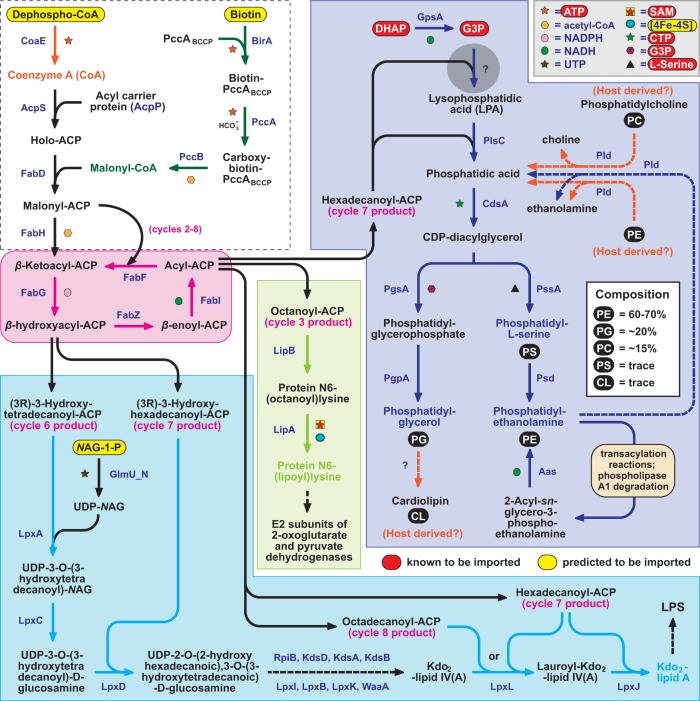FIG 2 .
Rickettsia species synthesize fatty acids and glycerophospholipids from host precursors. (Dashed box) Predicted imported substrates dephospho-CoA and biotin are required for holo-ACP synthesis and loading of the biotin carboxyl carrier protein, respectively, which collectively lead to the formation of malonyl-ACP. As Rickettsia species lack ACC, a conserved PCC complex is predicted to generate malonyl-CoA (green). Type II fatty acid synthesis (pink) is utilized by Rickettsia species to generate octanoyl-ACP for lipoate synthesis (light green), β-hydroxyacyl-ACPs (14C and 16C) and acyl-ACPs (16C and 18C) for Kdo2-lipid A synthesis (light blue), and hexadecanoyl-ACP for glycerophospholipid synthesis (dark blue). Acyl chain incorporation into lipid A follows the structure deduced for R. typhi (171). While both DHAP and G3P are known to be imported from the host (51, 52), Rickettsia species lack enzymes to generate LPA via the first incorporation of hexadecanoyl-ACP (the gray circle represents this pathway hole). All enzymes subsequent to this step are highly conserved (see Fig. S10), generating the predominant glycerophospholipids characterized in Rickettsia membranes (inset at upper right) (81). Dashed lines illustrate possible Pld-mediated salvage pathways for bacterial PE, as well as host PE and PC (orange). If PC (82) and cardiolipin (81) are incorporated into Rickettsia membranes, both must be acquired from the host (orange).

